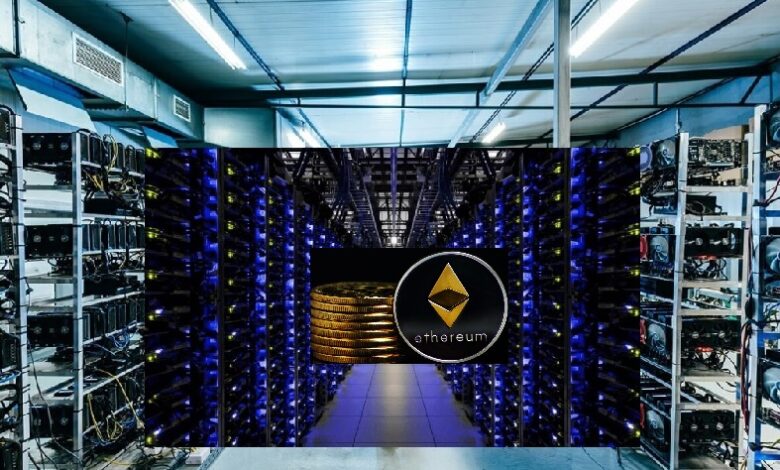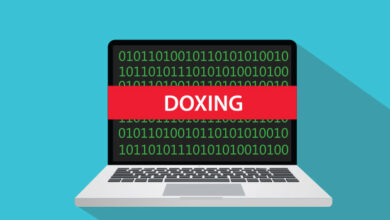
The method of constructing a transactions on the network to be uploaded to the Ethereum platform is referred to as mining.
Ethereum mining, like Bitcoins, utilizes a proof-of-work (PoW) blockchain at the moment. The essence of proof-of-work is mine. Ethereum mining are machines that run programs and use their time and processing capabilities to conduct payments and create blocks.
Mining Work
Miners use powerful computers to solve difficult mathematical equations in order to confirm a cryptocurrency coin. However, the procedure becomes more exciting as the field becomes more intense. In this case, the first miner to break the difficult codes has the authority to approve the payment.
Miners receive benefits from the cryptocurrency world in exchange for their services. When the mining’ confirmation procedure is done, the system updates the ledger with fresh information in the form of blocks.
Miner Of Ethereum
Anyone with a device can technologically miner on the Ethereum mining platform. Meanwhile, not everybody can economically mine ether (ETH). To mining profitably, mines must typically buy specific desktop computers. Whereas anyone can operate the mining program on their pc, the normal PC is unlikely to yield sufficient block incentives to fund the related mining expenditures.
Ethereum Mining Costs
• The price of the hardware required to construct and operate a mining setup
• The price of electricity to run the miner rig
• If you’re mining in a pool, you’ll usually be charged a flat percentage of each block the pool generates.
• The financial cost of miners rig essential equipment (ventilation, energy monitoring, electrical wiring, etc.)
Ethereum Mining Transaction
- A user accesses the secret keys of certain account to write and sign a payment request.
- From certain node, the user publishes the payment request to the whole Ethereum platform.
- Every node in the Ethereum platform uploads the new deposit proposal to their local mempool, which is a collection of all payment proposals they’ve received about that haven’t yet been confirmed to the ledger in a block.
- At a certain point, a mining node will combine many dozen or hundreds of payment queries into a viable blocks, maximizing payment revenues whereas remaining within the block gas limit.
- The mining node afterward confirms the authenticity of each payment request (i.e., no one is attempting to convert ether from an account for which they have not generated a sign, the proposal is not malformed, etc.) and afterwards performs the code of the proposal, changing the condition of their local memory of the EVM. The payment fee with each such payment request is awarded to the miner’s accounts.
- Once all payment proposals in the blocks have been confirmed and performed on the locally EVM replica, the procedure of establishing the proof-of-work “certificate of legitimacy” for the possible block starts.
- Later, Ethereum miners will complete the production of a certification for a block that contains our payment request. The miners then publishes the entire block, which contains the certificate and the stated new EVM state’s hash.
- The new node is discovered through other nodes. Then confirm the certificate, run all payments on the block (including one original published by our client), and ensure that the hash of their updated EVM status even after payments is the same as the checksum of the miner’s block’s declared status. These nodes only accept the updated EVM value as the standard condition after adding this block to the last of their ledger.
- All payments in the new block are removed out of each node’s local memory buffer of unmet payment proposals.
- When a new node starts up, all blocks are downloaded in order, such as the block that contains our payment of interest. They create a local EVM replica (which starts out as a plain EVM) and go through the purpose of completing every payment throughout each block on top of it, checking condition checksums all along route.
- Every payment is mined (added in a new block and transmitted for first time) only once, but it is performed and confirmed by all participants in the canonical EVM state advancement process. This exemplifies one of blockchain’s core tenets: Don’t take someone’s word for it; check it out confirm.

Ethereum Mine
The method of constructing a block of payments to be uploaded to the Ethereum miner blockchain is referred to as mining. Miners procedure pending charges in exchange for block benefits in the form of Ether, the Ethereum channel’s original cryptocurrency.
Due to the Ethereum networking system’s complexity, creating a block necessitates a lot of computing labor (or hashing power). This complexity is proportional to the entire number of computational energy (also termed as the program’s total hashrate) utilized to mine Ether, that is used to protect the system from threats and also tune the efficiency at which blocks (and block awards) are created.
Block Generation
Block
A block is made up of a header and a content of payments. The header contains data that verify the block and links it to the other of the network. Ethereum Miners choose payments from waiting payment processing pool to include in each block based according to their own parameters (most commonly by the highest fees paid).
Blocks Of Time
Every 12 seconds, the Ethereum platform generates a new block. Block times will differ depending on how long it requires miners to generate a hash that meets the current mining difficulty. 12 seconds was chosen as the fastest time possible while also being much greater than system delay.
Decker and Wattenhofer of Zurich evaluated Bitcoin transmission delay in 2013 and found that it requires 12.6 seconds for a new block to spread to 95 percent of nodes. The 12 sec design aims to enables the system to transmit blocks as rapidly as feasible while minimizing the amount of stale blocks found by mining.
Why Do Miners Exist In The First Place?
We need to assure that everybody accepts on the sequencing of payments in decentralised systems like Ethereum. Miners assist in this by generating blocks by resolving computationally challenging riddles, thereby safeguarding the system from attackers.
Costs Of Equipment
Mining, as previously said, necessitates the allocation of computational resources to the solution of complicated mathematical problems. As a result, miners must set up specialised hardware capable of providing enough computing power to mine Ethereum. Note that the efficiency and energy of Ethereum mining rigs, that are generally an expensive undertaking, have a significant impact on processing outcome.
Usage Of Electricity
Electricity expenses are a big consideration because ETH mining rigs often run around the clock and consume a lot of energy. As a result, Ethereum miners require reliable — and generally affordable – electricity.
System Of Cooling
It is usual for mining rigs to overheating due to round-the-clock activities and the severity of mining procedure. Miners spend in cooling systems for this reason. As you may anticipate, this expense is included in the start-up costs of a mining company. Ethereum Miners are progressively shifting their mining operations to areas or nations with a cold environment in order to lower their overhead costs.
Crypto Mining Legality
It’s important to note that, as a result of crypto mining’s increased energy consumption rate and negative environmental impact, a rising number of countries are reconsidering their positions. It was most evident in China’s attack on bitcoin miners, particularly in Inner Mongolia. As a result, before jumping in and starting your operations, be sure that crypto mining is allowed in your country.

How To Get Started With Ethereum Mining
You can begin preparing to start up as an Ethereum miners once you’ve thoroughly researched and analysed all of the criteria listed.
A cryptocurrency wallet is the first element you’ll require. Every miner requires a wallet to collect and control his or her Ethereum mining profits. Although there are numerous wallet service providers to pick from, it is best to select one that allows you complete control over the economy. You can save your personal keys offline using the most protected wallet options.
Selecting An Ethereum Mining Rig
You can now plan to spending in Ethereum mining equipment after you’ve selected a trustworthy wallet. The following are the components of a typical mining setup:
- Power supply that is stable
- Motherboard
- Graphic cards
- Cooling system
GPU mining machines are the greatest choice for the most efficient mining project (rather than CPU). You’ll be able to employ many graphic cards to increase the computational energy of Ethereum mining equipment with these. Meanwhile, this option will greatly boost your initial prices. An Ethereum mining system with one graphic card whereas one with six graphic cards.
Choosing An ASIC Ethereum Miner
Alternately, you can purchase an application-specific integrated circuit (ASIC) miner designed specifically for Ethereum mining. This hardware platform is more costly, but it will increase performance and assure that your ETH mining activities are profitable. The Bitmain Antminer E9 is among the most popular Ethereum ASIC miners. It’s being billed as the world’s most powerful Ethereum mining ASIC, capable of achieving maximum hash rates equal to 32 graphics cards.
Mining program is the next thing on your purchasing checklist. You can monitor and control your mining activity using this platform’s interface. It also connects your computer to the Ethereum platform.

WinETH, Claymore, ETHmine, MinerGate, & CGMiner are among the most famous Ethereum mining applications. Before you choose one of these software platforms, be sure that works with the os on mining equipment.
Which Ethereum Miner Is The Best?
You should consider the miner’s GPU card’s resource efficiency, prices, and hashing rates as a primary leading concept. AMD Radeon RX580 and Nvidia GeForce GTX 1070 are two highly ranked Ethereum mines that have been shown to be incredibly effective.
Types Of Ethereum Mining
- Solo Ethereum Mining
Solo mining, as the title suggests, is when an one miner leads and performs the mining procedure autonomously. These solitary miners are not reliant on any outside parties. Instead, they discover blocks by connecting their mining PCs to native crypto wallet clients.
If solo Ethereum miners finish the entire mining procedure within the network, they will be rewarded handsomely. Furthermore, solo mining is very dependent on the hash power of the gear and the network’s in general hash rate. Solo miners, on the other hand, were able to make adequate income while the hash rate difficulty was lower.
Aside from that, fluctuations in cryptocurrency properties and high electricity costs have a significant impact on the profitability.
Solo Ethereum mining and profitability are essentially determined by two factors: equipment strength and connection complexity. The problem about solo miners is that also a miner.

Obtains a solutions to difficult block information in a short time of time, or it may take years.
Pool Ethereum Mining
Pool Ethereum mining is a method of crypto mining in which a team of cryptocurrency miners pool their processing funds and authority throughout a system to increase the likelihood of discovering a block or finishing cryptocurrency mining. In essence, participants of a mining pool their computing power in order to discover the block as quickly as possible.
If they correctly locate the block, they will be rewarded with cryptocurrencies. Furthermore, the system divides the incentive money among the participants based on their % of pool contributions. You should also keep in mind that an user only earns incentives if they can present proof of effort for payment systems.

Advantages Of Solo And Polo Ethereum Mining
| Advantage Of Solo Mining | Advantage Of Pool Mining |
| Being the only owner of large sums of rewards is one of the most significant and appealing advantages of solo mining. In pool mining this is just not possible. | Pool mining provides members with the benefit of generating a more consistent income. |
| If a lone miner’s equipment discovers the worth of a new block before others, he will get the full benefit. | Miners who participate in pool mining profit from lengthier polling, which allows them to earn 1 to 2% more. |
| Outages have a very low probability of interfering with solo mining. | Miners can choose from a variety of crypto currency when they participate in pool mining. |
| Furthermore, this could lead to increased uptime. | As a result, customers gain from the ability to move between numerous crypto coins, allowing them to select the best ones for trading. |
| Solo miners will not be able to afford to pay any further fees. | —————– |
| In fact, a solitary miner receives roughly 6.25 Bitcoin and transaction tax for each block discovered. | ————– |
Disadvantages Of Solo And Polo Ethereum Mining
| Disadvantage Of Solo Mining | Disadvantage Of Polo Mining |
| The requirement of a huge sum of money to begin and process solo mining. | When it comes to pool mining the likelihood of external entities posing barriers at the pool provider is significant. |
| The risk of losing all of your reward money at once if another miner or miners with faster processing speeds decide to participate in solving the block you’re working on. | Pools are also vulnerable to DOS attacks and have other security flaws. Members, on the other hand, can change the pool mining setup. |
| The possibility of a group of miners never achieving the same level of computation power. | The platform fees are covered by a major amount of the cash miners get via pool mining. In addition, the procedure of recouping transaction costs is quite slow. |
| If miners seek to invest in popular cryptocurrencies like Bitcoin, they face a high chance of money loss. | Because of the large number of currencies that can be stored in a pool, it attracts attackers. |
| The income generated by solo mining is sometimes more irregular. | —————– |
| Due to the fact that solo mining only supports network pull, solo miners waste a lot of time. | —————– |
Solo Mining And Polo Ethereum Mining Which Is Better
People desire reliability and consistency when it comes to their finances. In the world of cryptocurrencies, both of these ideas are debatable. However, it would be far safer to make and exchange new cryptocurrency on a regular basis than to be unsure for further than 5 months. While pool mining entails danger, solo Ethereum mining necessitates a lot of dedication with no certainty of achievement.
Meanwhile, it is dependent on your own preferences and financial resources. If you have millions to spend, solo mining is the way to go; however, establishing a pool is the way to go.
Read Also-Whatsapp Chatbot: A Great Step By West Bengal Government
Moreover, the hashing difficulty of all well-known cryptos is rising rapidly. In fact, ETH and BTC have become 30 & four times more difficult to implement in just a year.
Even at the start of the mining business, most miners realised that working alone would be extremely difficult. As a result, the majority of them will be pool mining, pooling their machine abilities. They’ve been able to achieve more consistent & equitable awards by working together.
As a pool miner, meanwhile, you would never be ready to accumulate the complete award price; the more mines in a pool, the smaller the payouts.
Analyzing Solo Mining’s Capital Requirements And Profitability Of Ethereum Miner
Moreover, the hash rate difficulty is approaching unfathomable proportions due to the growing number of players. And the chances of finding such a device on your own are nearly nil. Consider the capital needs for a solo Ethereum miners to mine a bitcoin protocol with a strong hash rate of 1 pth per sec.
Mines will have to keep a farm capabilities in order to do so. Also, keep in mind that this price doesn’t include price of supplies or power.
Read Also-The Great Resignation: Why Considerable Number of Workers are Quitting?
With a 95 percent chance of success, you’ll need to work consistently for roughly 200 days. Then you can look for a block value and be rewarded with 12.5 Bitcoin. It’s worth noting that this sum is enormous, thus it’s unquestionably advantageous for you.
In addition, the network’s intricacy will rise in the following days. As a result, about 100x more capability will be required to keep the method of selecting new blocks going every day. This entire situation will necessitate a multimillion-dollar expenditure.
Why Should Mine Ethereum?
Ethereum mining prices are down (1$) whenever the Ethereum Mining platform initially launched in 2015. As a result, mining Ethereum was not a get-rich-quick plan. Several of the initial miners were programmers or cryptocurrency enthusiasts who were enthusiastic about the idea and decided to help.
Ethereum Mining got more profitable as the price of ether rose, drawing tech-savvy individuals who recognised the program’s ability and were skilled enough to function their own nodes. Mining Ethereum has become a profitable industry, despite the tough competition, as Ethereum mining.

However, Ethereum mining is a feasible alternative for anyone with unused GPU computing power who want to delve deeper into the realm of Ethereum mining while also generating some additional money.
Nonetheless, with PoW on the horizon and Ethereum staking already in place, it seems like a good time to start staking, which would be a less time-consuming and hardware-intensive opportunity to collect money Ethereum mining.
Conclusion
Ethererum mining was created with the intention of utilizing the available resources mining with only graphics processing unit (GPUs). This contrasts sharply with Bitcoin, which is currently almost entirely mined with specialised technology known as ASICs.
The goal of putting such a limitation in Ethereum’s mining programming was to prevent the concentration of hash rate that has been witnessed in the Bitcoin network. Ethereum mining programmers designed to make sure that after substantial network growth and a higher complexity rate, miners would still be achievable for people with home-owned PCs and rigs by optimizing Ethereum mining for GPUs.
Users with sufficient funds can go solo mining or choose less well-known currencies with lower difficulty. They will be able to locate the block more easily and quickly this manner. Meanwhile, we must keep in mind that cryptocurrency with values in the hundreds of thousands of dollars will not provide you with large sums of money in a short period of time. As a result, even with low complicated hash rates, you’ll have to wait years to see a significant return.
Meanwhile, if those currencies are becoming more successful in the future, you will become a billionaire overnight. However, it is only a suggestion, and it is preferable to be pragmatic. However, independently mining bitcoins requires a significant financial investment.
Even if you begin solo mining, you may always combine large mining pools for more consistent coin transfers. You can contribute significantly & receive decent rewards there. If you want to earn a lot of money as a pool Ethereum mining, you’ll need to put in a lot of money.






